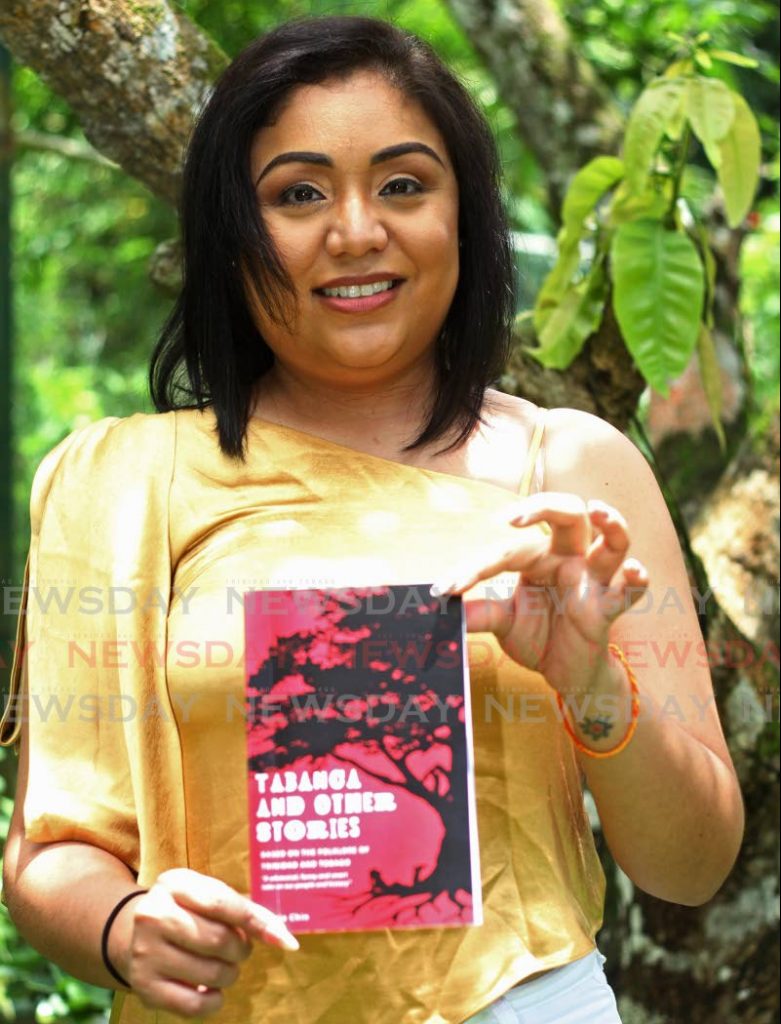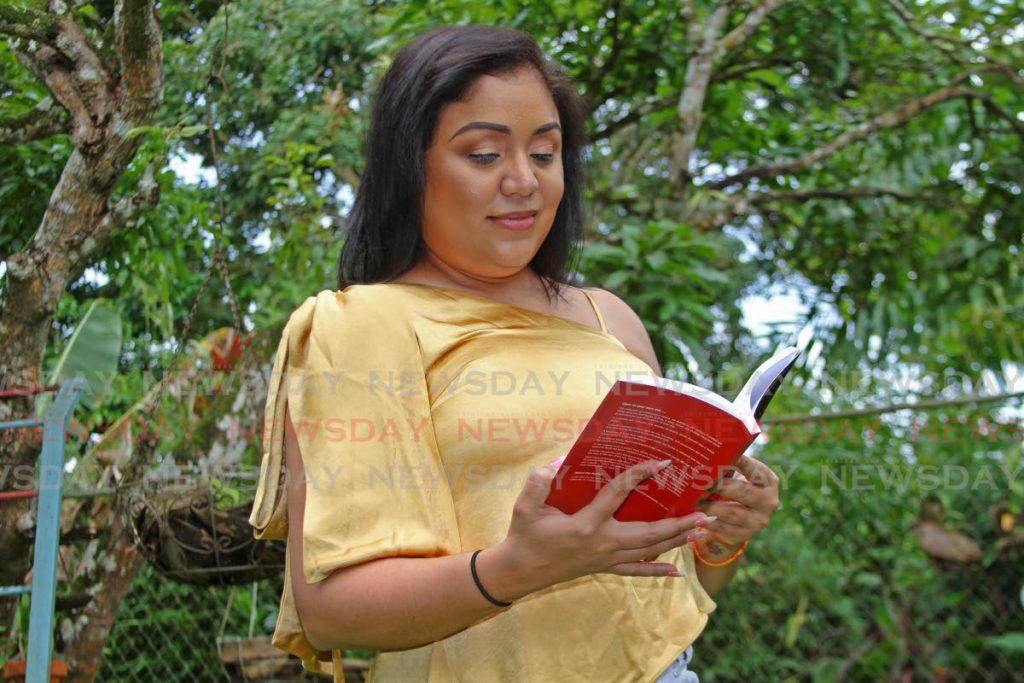Attorney writes folklore collection: Tabanca and Other Stories

Since 2017, attorney Tricia Chin has worn a chain with a coin-shaped gold pendant. When she bought it that year, she did so because of its beauty and wasn’t aware of what it symbolised.
But that changed in June 2020, when she spoke with an elderly East Indian man in a Port of Spain restaurant.
Chin told Newsday the pendant is "not really a coin, it’s just in the shape of a coin.
“One day in 2020, I was walking through Port of Spain and went to get lunch. The owner of the restaurant was an elderly East Indian gentleman who watched me and asked if it was a
mohar I was wearing.”
Not knowing what a mohar was, Chin was confused.
“I asked him what mohar meant and he explained that it was something Indian people kept and brought over with them from India.
“When I went back to my office, I would have Googled
mohar. I got pictures of it and saw that it was the currency of India a long time ago.”
A mohar was a gold or silver coin once used in Nepal.
To Chin, the conversation was eye-opening. Being of East Indian descent herself, she wasn’t very proud of not knowing what a
mohar was.
It also made her wonder what other aspects of her heritage she didn’t know about and how many people were in the same position.
At the time, Chin was working on a collection of folklore-based stories titled Tabanca and Other Stories.

The incident not only inspired a new story in the book but also validated why writing it was important.
Chin has loved always loved law, which guided her career as an attorney. She did her bachelor of laws (LLB) at the UWI Cave Hill Campus, followed by the Hugh Wooding Law School and was called to the bar in Trinidad and Tobago in 2005.
For her postgraduate studies in transnational trade law and finance, Chin did a programme in Europe from 2008-2010 which was split among three universities, including the University of Deusto in Spain.
But her travels, and conversations like the one she had with the restaurant owner, opened her eyes to what she sees as a lack of understanding and appreciation for local culture.
So while finishing her postgraduate studies, Chin did the Camino de Santiago pilgrimage across northern Spain to visit the burial site of St James the Apostle.
She explained, “It’s a pilgrimage that has been in existence for at least 1,000 years or so and people do it from all across Europe.
“So I started it at the traditional spot. which is the border between France and Spain and I walked it.,,the whole 790 kilometres from the border of France and Spain to where he’s buried in Santiago de Compostela.”
During the initial covid19 lockdown in 2020, Chin developed a “tabanca” for travelling.
Her brother suggested she write about her pilgrimage in Spain as a way to relive the experience.
“I said to myself, 'Let me try to write about it (the pilgrimage),' and I ended up with my first story, which is ‘Tabanca – which had nothing to do with Spain.
“I would have grown up hearing stories about folklore. I grew up in Brasso – which is Brasso in Central, closer to Tabaquite, not Brasso Seco.
“My granny would have all these stories, like if someone would get up early to cook and they'd be hearing a voice calling whose name outside, and stuff like that."
As Chin continued writing, the idea for Tabanca and Other Stories took shape. She started in June 2020 and by June 2021, she felt she had enough content to put together a book, now self-published.
While Chin wrote about traditional folklore characters like the soucouyant and douen, she also took creative risks like making popular patois words into characters.
She also placed special emphasis on the book’s setting.

“I placed it in the 1800s, because folklore is best placed in the past, it has a feeling for me as if it’s in the past.
“The stories are not like how you would expect folklore stories to be. So it’s not like I went down the road, followed a deer into the forest, the deer turned into Papa Bois and he told me I should stop hunting manicou...Tabanca is a character, bacchanal and commess are characters…those are not characters in the true sense of the word.”
Other patois words like cote-ci cote-la, vie-ki-vie obeah, lackaray and dingolay were made into characters.
Chin also did additional online research as well as using the stories she heard while growing up.
“If, for example, I wanted to write about the silk cotton tree, I would question if what I was thinking was true and if I remembered it correctly. So I would go online, check and research. I would go into multiple sources."
While writing, Chin also posted excerpts of the stories on social media for her friends' feedback.
One of the main challenges she had was being concise.
“Yes, I could have gone all over the place with stories and I wanted to go all over the place with the stories. But I had to control myself. I sat down and thought about it and I realised the stories were as good as they were when I was finished.”
During her studies in Europe, including her pilgrimage in Spain, Chin learnt about many European folklore and myths. For example, the god Thor has prominence in Scandinavian culture.
Seeing the pride foreigners have in their culture, Chin wants people in TT to be connected to theirs and feel the same way. At the moment, she doesn’t think much is being done to promote local history or folklore.
While she was writing for entertainment purposes, Chin was advised to include a “words to note” section in Tabanca and Other Stories. Readers can use it to learn more about some of the vocabulary.
In addition to being sold at bookstores like Scribbles and Quills in Chaguanas, and Paper Based Bookshop at the Normandie Hotel, St Ann's, the book is also available on Amazon. To date, it has sold close to 200 copies.
Though she’s started work on a part two, she’s taking her time to properly develop it. But like the first book, she isn’t sure what direction it will take and it may turn out to be something entirely new.
Chin’s advice to other people interested in writing is to enjoy the journey and get lot of feedback when writing. When they are ready to publish, Chin also encourages other writers to get an editor to review the work.
“Writing is something that should be enjoyable. But also enjoy all of the steps that lead to an actual published product.
“Don’t be surprised if you get frustrated along the way, because that’s just natural.”
People interested in Chin’s book can follow her on Instagram @trinidadfolklo or like trinidadfolklo on Facebook.


Comments
"Attorney writes folklore collection: Tabanca and Other Stories"